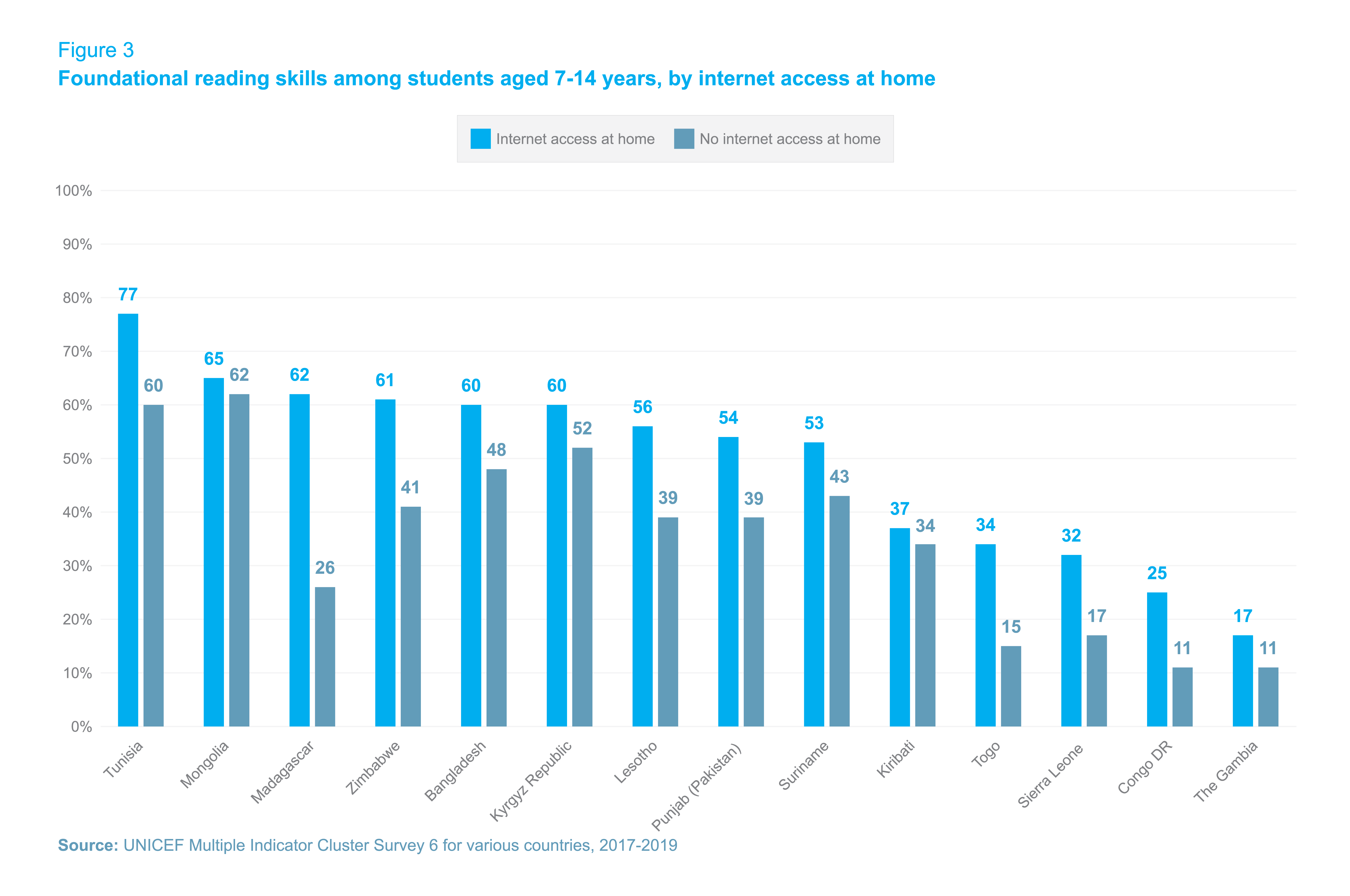Adapting to Remote Learning Challenges During the Pandemic

Navigating Education in Unprecedented Times
The global pandemic disrupted various facets of our lives, and education was no exception. As schools and universities closed their physical doors, educators, students, and parents found themselves navigating uncharted territory. Remote learning emerged as a lifeline, offering a semblance of continuity in education during these challenging times.
Challenges and Opportunities in Remote Learning
While remote learning became a necessity, it also brought forth a unique set of challenges. Students faced difficulties adapting to virtual classrooms, dealing with technology issues, and missing the social interactions inherent in traditional education settings. However, it also presented opportunities for innovation, pushing educators to explore new teaching methodologies and leverage digital tools to enhance the learning experience.
The Role of Technology in Shaping Remote Education
Technology played a pivotal role in the transformation of education during the pandemic. Virtual classrooms, video conferencing platforms, and collaborative online tools became the new norm. This shift not only facilitated real-time interaction between teachers and students but also opened up possibilities for global collaboration. The integration of technology became a catalyst for reshaping the future of education.
Remote Learning’s Impact on Student Engagement
One of the notable aspects of remote learning was its impact on student engagement. With the flexibility of accessing lectures and resources from anywhere, students had the opportunity to tailor their learning experience to suit their individual preferences. However, maintaining consistent engagement and motivation proved to be a challenge that educators and students worked together to address.
Addressing Equity Issues in Remote Education
While remote learning offered flexibility, it also highlighted existing disparities in access to technology and the internet. Not all students had equal opportunities to participate fully in virtual classrooms. Schools and policymakers recognized the importance of addressing these equity issues to ensure that education remains accessible to all, regardless of socio-economic factors.
Remote Learning as a Catalyst for Lifelong Learning
The pandemic emphasized the need for continuous adaptation and learning in a rapidly changing world. Remote learning not only served as a short-term solution but also became a catalyst for promoting lifelong learning. The skills developed during this period, such as digital literacy and self-directed learning, are valuable in preparing individuals for the evolving demands of the future.
Teacher Innovation and Professional Development
Educators found themselves at the forefront of innovation during the pandemic. Adapting lesson plans for online delivery, exploring new teaching methodologies, and incorporating interactive elements into virtual classrooms became essential skills. Professional development opportunities and collaborative platforms allowed teachers to share insights and support one another in this transformative journey.
The Emotional and Social Impact on Students
Beyond academic challenges, the shift to remote learning also had emotional and social implications for students. The absence of in-person interactions with peers and teachers took a toll on the social development of students. Schools and educators recognized the importance of fostering emotional well-being and implemented strategies to address the social aspect of learning in virtual environments.
Preparing for the Future of Education
As the world gradually recovers from the pandemic, the lessons learned from the era of remote learning will shape the future of education. Schools and educational institutions are now better prepared to integrate technology seamlessly into their curricula. The experience gained during this challenging period will contribute to a more resilient and adaptable education system.
To explore more about the impact of remote learning during the pandemic on consumer health, visit Remote Learning Pandemic. As we reflect on this transformative period in education, it is evident that the challenges posed by the pandemic have accelerated positive changes, fostering a more innovative, inclusive, and technologically advanced approach to learning.
Adapting Education: Remote Learning Strategies Amid Pandemic

Adapting Education: Remote Learning Strategies Amid Pandemic
The COVID-19 pandemic has reshaped education, prompting a surge in remote learning. In this article, we explore effective strategies for adapting to the challenges posed by the pandemic and ensuring the success of remote learning initiatives.
Technology Integration: The Backbone of Remote Learning
Integrating technology into education has become paramount in the era of remote learning. Platforms such as video conferencing, online collaboration tools, and learning management systems facilitate seamless communication and interaction between students and educators. Embracing technology is the first step in creating a dynamic and engaging remote learning environment.
Synchronous and Asynchronous Learning: Balancing Flexibility and Interaction
Remote learning allows for a blend of synchronous and asynchronous learning experiences. Synchronous sessions, conducted in real-time, offer opportunities for live interactions, discussions, and immediate feedback. Asynchronous learning, on the other hand, provides flexibility by allowing students to access materials and complete tasks at their own pace. Striking a balance between these approaches accommodates diverse learning preferences.
Engagement Strategies: Fostering Active Participation
Maintaining student engagement is a challenge in remote learning environments. Educators employ various strategies, such as interactive quizzes, polls, and virtual group activities, to foster active participation. Creating a sense of community through online forums and discussion boards also enhances student engagement and contributes to a more enriching learning experience.
Clear Communication: Building Transparent Connections
Clear communication is fundamental in remote learning. Educators must articulate expectations, assignment details, and communication protocols clearly. Regular updates on schedules, assessments, and any changes in the course structure build transparent connections between educators and students. Effective communication minimizes confusion and ensures everyone is on the same page.
Flexible Assessments: Adapting Evaluation Methods
Traditional assessment methods may need modification in a remote learning setting. Implementing a variety of assessment tools, such as online quizzes, written assignments, and project submissions, accommodates different learning styles. Flexibility in assessment methods ensures that students can demonstrate their understanding in ways that suit their strengths.
Professional Development for Educators: Enhancing Digital Literacy
Educators play a crucial role in the success of remote learning. Providing professional development opportunities to enhance digital literacy and teaching skills is essential. Training programs on effective online instruction, technology usage, and adapting curriculum for remote environments empower educators to deliver high-quality education.
Equitable Access to Resources: Addressing Disparities
Ensuring equitable access to resources is a priority in remote learning. Schools must consider the varying levels of access to technology and the internet among students. Implementing solutions, such as providing devices or internet connectivity assistance to those in need, helps address disparities and ensures that all students can fully participate in remote learning.
Supporting Student Well-being: Prioritizing Mental Health
The shift to remote learning can impact student well-being. Educators and institutions must prioritize mental health by creating a supportive environment. This includes fostering open communication, providing resources for stress management, and recognizing the challenges students may face in adapting to remote learning.
Parental Involvement: Collaborating for Success
Remote learning requires collaboration between educators and parents. Keeping parents informed about the curriculum, expectations, and providing guidance on supporting their children’s learning at home fosters a collaborative approach. Regular communication channels, such as virtual parent-teacher meetings, strengthen the partnership between home and school.
Accessing Remote Learning Strategies Pandemic: A Resource Hub
For additional insights and resources on effective remote learning strategies during the pandemic, consider exploring Remote Learning Strategies Pandemic. This centralized hub provides valuable information, best practices, and support for educators, students, and parents navigating the challenges of remote learning in these unprecedented times.





